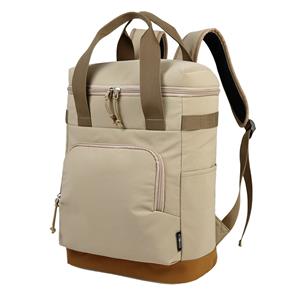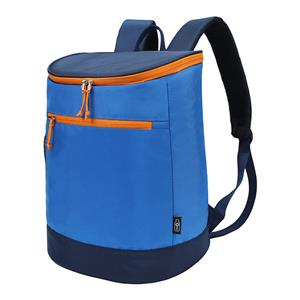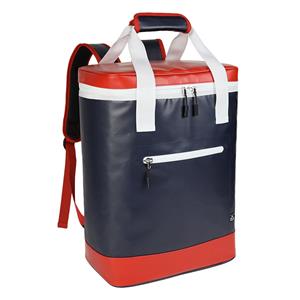The Ultimate Guide to the Versatile Insulated Backpack: Keeping Your Essentials Fresh, Warm, or Cool for 16 Hours
In today's fast-paced world, the need for versatile and reliable insulated backpacks has never been more critical. Whether you're a busy professional, an outdoor enthusiast, a parent on the go, or someone who values convenience and functionality, finding a backpack that can keep your items at the desired temperature for an extended period is a game-changer. This article delves into the features, benefits, and applications of a cutting-edge insulated backpack that promises to keep your contents cold, warm, or fresh for an impressive 8-16 hours. We will explore the innovative materials, design elements, and practical uses that make this backpack a must-have for various scenarios.
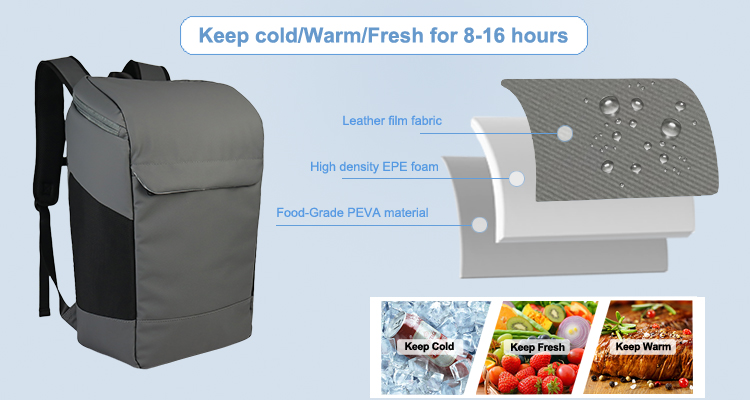
The Insulated Backpack: A Modern Necessity
In our daily lives, we often find ourselves in situations where temperature control is essential. Whether it's transporting perishable food items, carrying medication that requires specific storage conditions, or ensuring a hot meal stays warm for later consumption, an insulated backpack offers a practical solution. It bridges the gap between convenience and functionality, allowing users to maintain the integrity of their contents regardless of external environmental factors.
The backpack showcased in the image exemplifies the pinnacle of insulated backpack technology. Its sleek design, coupled with advanced insulating materials, ensures that it stands out in a market saturated with ordinary bags. Let's break down what makes this backpack a superior choice for anyone seeking temperature-regulated storage on the go.
Material Innovation: The Backbone of Performance
The heart of any insulated backpack lies in its materials. The backpack in question employs three key materials that work in harmony to achieve its remarkable temperature retention capabilities: leather film fabric, high-density EPE foam, and food-grade PEVA material. Each material plays a distinct role in creating a barrier against temperature fluctuations, ensuring that the contents remain at the desired temperature for hours.
Leather Film Fabric: This material forms the outer layer of the backpack, providing a durable and aesthetically pleasing exterior. Leather film fabric is known for its water-resistant properties, which is crucial in preventing moisture from seeping into the backpack and affecting the temperature-controlled environment inside. Additionally, its sleek appearance gives the backpack a sophisticated look, making it suitable for both casual and professional settings.
High-Density EPE Foam: Sandwiched between the outer layer and the interior, high-density EPE (Expanded Polyethylene) foam serves as the primary insulating agent. EPE foam is celebrated for its exceptional thermal insulation properties. It creates a barrier that significantly reduces the transfer of heat between the inside and outside of the backpack. This means that cold items remain cold, and warm items stay warm, all while blocking external temperature changes from penetrating the backpack's interior. The high density of the foam enhances its insulating efficiency, extending the temperature retention window to up to 16 hours.
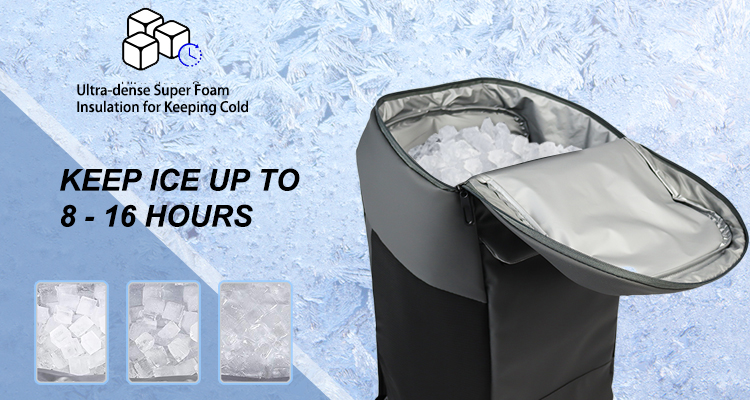
Food-Grade PEVA Material: Lining the interior of the backpack is food-grade PEVA (Polyethylene Vinyl Acetate) material. This material is in direct contact with the contents of the backpack, making its food-grade certification a vital aspect of the backpack's design. PEVA is not only safe for food storage but also adds an extra layer of moisture resistance. It prevents condensation from forming inside the backpack, which could otherwise compromise the quality of perishable items. Furthermore, its smooth surface is easy to clean, ensuring hygiene and longevity.
The combination of these three materials creates a multi-layered defense against temperature changes, making the backpack a reliable companion for various temperature-sensitive items.
Temperature Regulation: Keeping It Just Right
The backpack's ability to maintain cold, warm, or fresh conditions for 8-16 hours is a testament to its advanced design and material composition. This extended temperature retention is achieved through the synergistic effect of the insulating materials, which work to minimize heat exchange with the external environment. Let's explore how this backpack can be utilized in different temperature control scenarios.
Keeping It Cold: For those who enjoy picnics, beach days, or outdoor adventures, preserving the coldness of food and beverages is essential. The backpack's insulation effectively slows down the transfer of heat from the warmer external environment to the cooler interior. This means that ice packs or chilled items will take much longer to warm up, ensuring that your lunch remains fresh and your drinks stay refreshing throughout your outing. It's also ideal for transporting perishables from the grocery store to your home, preventing spoilage during the journey.
Keeping It Warm: On the flip side, the backpack can also be used to keep items warm. For individuals who prepare meals in advance or enjoy a hot lunch during work or school, this feature is invaluable. By placing hot food inside the backpack and sealing it, the insulation traps the heat, slowing down the cooling process. This allows you to savor a warm meal hours after it was initially packed, providing a convenient and cost-effective alternative to purchasing food on the go.
Keeping It Fresh: Beyond simple temperature control, the backpack creates an environment that helps preserve the freshness of various items. For instance, it can be used to transport fresh produce from the market to your home, maintaining the optimal temperature to prevent premature spoilage. It's also beneficial for storing temperature-sensitive medications or beauty products that require specific storage conditions to maintain their efficacy.
The versatility of this backpack in handling different temperature requirements makes it a practical solution for a wide range of users and situations.

